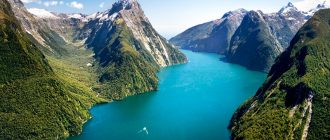Cuenca (Spain) – the most detailed information about the city with photos. Cuenca’s main landmarks with descriptions, guides and cards.
Contents
City of Cuenca (Spain)
Cuenca is a city in Spain in the autonomy of Castile-La Mancha. Located between the gorges of the Jukar and Uecar rivers a little east geographical center of the country. Cuenca is one of the most beautiful. medieval cities of Spain whose historical center located on a picturesque rocky plateau and is included in the list UNESCO World Heritage sites. Thanks to its old cobbled The streets and ancient architecture, Cuenca perfectly preserved its the historic atmosphere, and the famous houses hanging over the rocks, and, as if sprouting from them, create just a magic spectacle. This place is ideal for wandering through the ancient streets in which picturesque lanes open up, fascinating historical monuments and fabulous views at almost every step.
- Geography and climate
- Best time to visit
- Practical information
- Story
- How to get there
- Shopping and shopping
- Food and drink
- sights
- Video
- Maps and guides
- Comments and reviews
Geography and climate
Cuenca is located just north of the geographical center. autonomy halfway between Madrid and Valencia. It is divided into two parts: Old and New Town. The historic center is located on rocky cliff bordering the gorge of the river Jukar in the north and its tributary of the river Uekar in the south. The city center is at an elevation of 997 meters above sea level. Climate – Mediterranean continental. Summers are hot and dry; winters are cool with rare negative temperatures.
 Old city
Old city
Best time to visit
Best time to visit: April-June and September October.
Practical information
- The population is 54.9 thousand people.
- The area is 911.06 square kilometers.
- The language is Spanish.
- Currency – Euro.
- Visa – Schengen.
- Time – Central European UTC +1, in summer +2.
Story
On a high rocky cliff at the beginning of our era there was a Celtic settlement. Later came the Romans who founded here a small fortress with a garrison. In 711, the Arabs captured Cuenca. In the Moorish period the city was called Kuvenka. By the middle of the 12th century there was a fairly large settlement with a good fortified walls.
 Evening in Cuenca
Evening in Cuenca
In 1177, Cuenca was taken by King of Castile Alfonso VIII, who made the city the capital of the kingdom and brought the diocese here. Interestingly, the first time Christians peacefully got along here, Muslims and Jews. In the future, new laws spawned strife that led to the formation of enclaves divided by religious feature.
Like many Castilian cities, Cuenca flourished until the end of the 16 century. It produced fabrics and wool, raised cattle and treated with ivory. High welfare of the city attracted numerous artists and architects who erected beautiful buildings and created valuable objects of art. AT the end of the 16th century begins the black strip: the plague, drought, invasion locust, epidemics, new laws that led to economic decay. In the 18th century, they tried to revive the textile production, but in vain. In the 19th century, Cuenca becomes the capital the province of the same name.
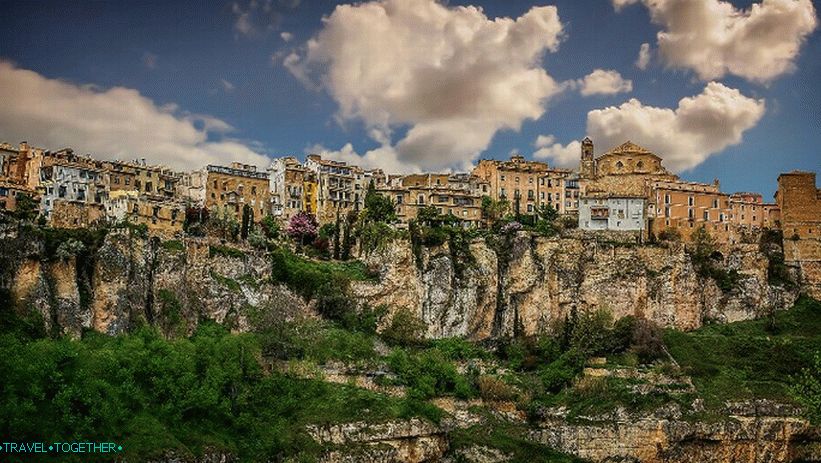 Panorama Cuenca
Panorama Cuenca
How to get there
Cuenca is located between Madrid and Valencia / Alicante. AT These cities have major international airports. Also Cuenca has regular bus and train connections to the capital of Spain and Valencia. In addition, speed go here the trains. The journey from Madrid takes less than an hour. Trains arrive at the station, located 5 km from the city center. AT The historic center can be reached by bus or taxi.
Shopping and shopping
Cuenca has a wonderful collection of small art galleries, making it a great place to shop various art objects. Souvenirs can be bought at tourist information center.
 Cuenca
Cuenca
Food and drink
In the old town there are many charming cafes with terraces. Popular traditional dishes: Zarajos (fried lamb), Morteruelo (a kind of hot pate), Ajoarriero (cod stew), vegetable stew, grilled meat and river a fish.
 Cuenca Streets
Cuenca Streets
sights
 Hanging houses
Hanging houses
Hanging houses are the main symbol of Cuenca. This is a picturesque medieval buildings built on a rocky cliff above the gorge Uekar River. Houses literally cling to rocks, creating magical cityscapes. Originally such facilities were littered with all the gorge, but now these medieval houses are not right lot.
 Cathedral Cathedral
Cathedral Cathedral
Cathedral of Santa Maria la Mayor – impressive religious building on the main square of the city, built between 12th and 13th centuries in Norman and Gothic style. Despite, that the facade was damaged in 1902, the interior of the cathedral is beautiful preserved. The main features of the interior are: the altar 18 Century of Ventura, beautiful Renaissance arch, Mater 13th century Dolorosis by Pedro de Men in the sacristy and the crucifix Yanes de la Almedina in the chapel of Los Caballeros.
Adjacent to the cathedral is the episcopal palace, which exhibits exceptional art collection of the cathedral.
 Former monastery San pablo
Former monastery San pablo
In a picturesque location above the gorge of Uekar (opposite the hanging houses) is the former monastery of San Pablo, converted into a hotel. The monastery was built between the 16th and 18th centuries and is located on the outskirts Cuenca. The gothic monastic church was turned into charming cafe.
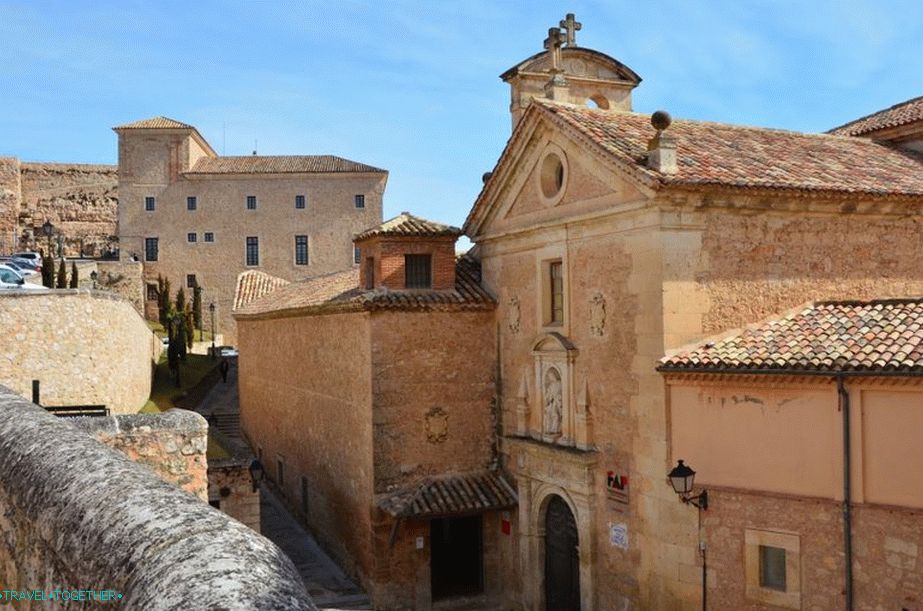
The Carmelite Monastery is a beautiful baroque structure, built in the 17th century. The monastery is at the highest point. Cuenca with a beautiful view of the valley of the river Uekar. Now within its walls University is located.

San Felipe de Neri – 18th century ornate church in style rococo. It has a vaulted nave resembling a Latin cross. Plain the appearance is contrary to the refined interior with fancy Rococo details, especially chapels and decorative columns with beautiful capitals.
 Virgin de la lous
Virgin de la lous
Virgen de la Luz – a beautiful 16th century church dedicated to the Virgin Mary’s It has a beautiful rococo facade.

Nuestra Señora de las Angustias – a small baroque temple 17 century, located on the site of an ancient chapel.
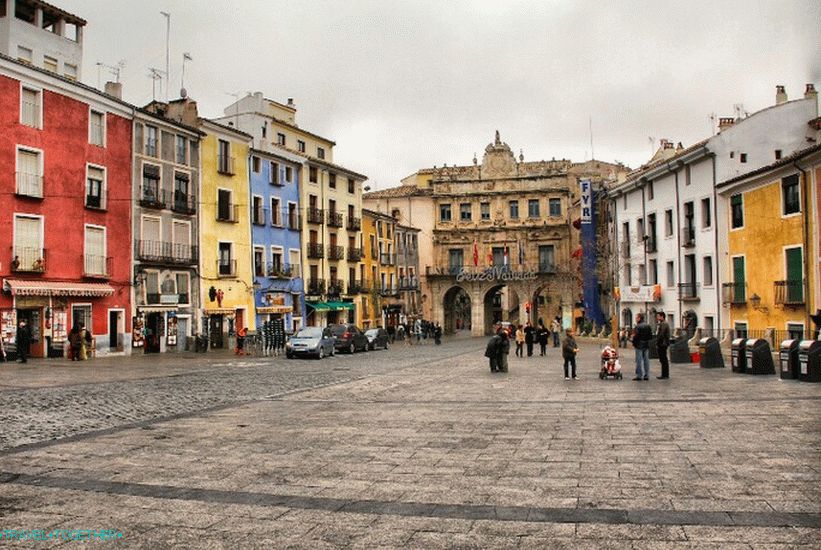 Plaza Mayor
Plaza Mayor
Plaza Mayor – the central square of the city. Most interesting the building is a baroque town hall built in the second half of the 18th century. Main street leading to the square – Alfonso Viii. It was architecturally formed in the 18th century and contains several beautiful historic buildings.
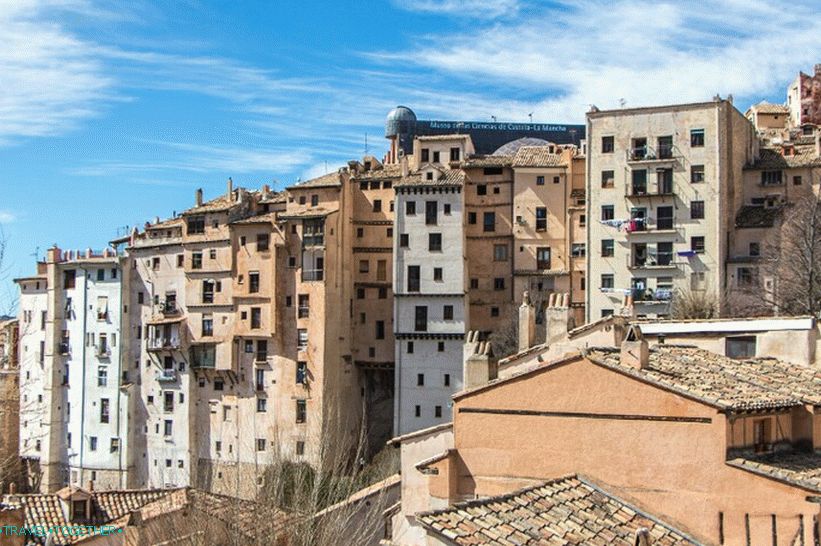 Quarter San martin
Quarter San martin
San Martin is one of the most charming areas of Cuenca. it a quarter of winding streets and houses hanging on a cliff.
 Old Castle
Old Castle
From the ancient Moorish fortress and unapproachable Christian There are practically nothing left in the citadel of Cuenca. About the past scope resemble fragments of walls and entrance arches. Although the rise here will reward you with beautiful landscapes.

The Monastery of Conceptists was founded at the beginning of the 16th century. The monastery church was built in the Baroque style.
 San andres
San andres
San Andrés is a gothic church located on a small quiet square. Closed to the public.
 San Miguel
San Miguel
San Miguel – a magnificent building of the end of the XIII century with the original ancient apse. The rest of the building was restored in 18 century.
 Mangan’s Tower
Mangan’s Tower
Mangana – a tall stone tower with a clock on the facade.
 Bridge san pablo
Bridge san pablo
San Pablo – pedestrian bridge over the gorge with a beautiful view of old town and surroundings. Dated by the beginning of the 20th century. First bridge on this place was built of stone in the 16th century, but in the 19th century it collapsed.
Video
Maps and guides
City Map Historic Center Map Cuenca Guide





